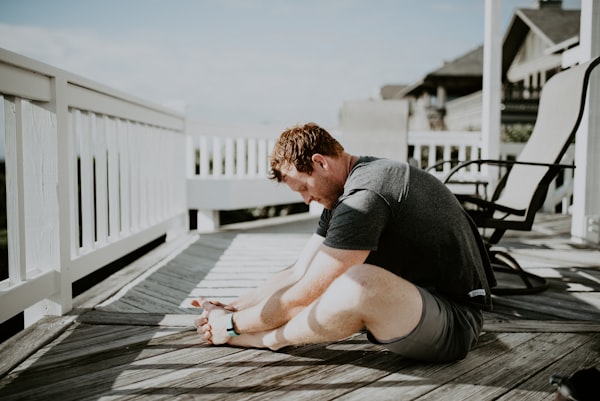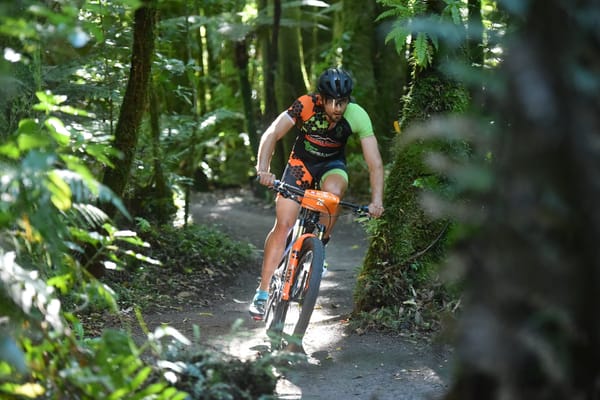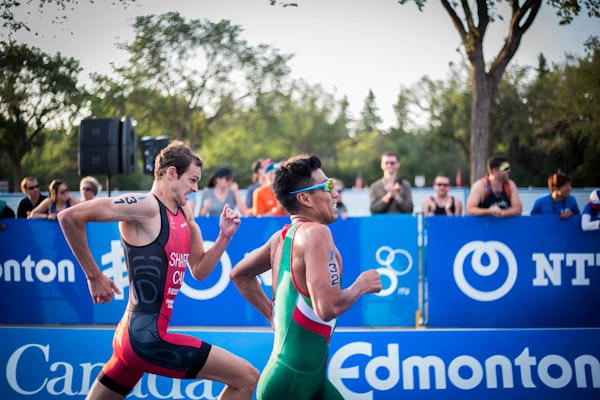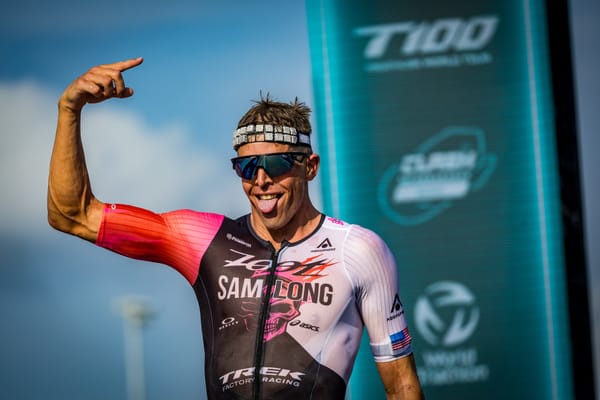Aaron Royle Unpacks His Rio Olympic Race Performance
Australian Olympic triathlete, Aaron Royle, talks to Trizone about his preparation for his debut at the 2016 Olympics, finishing 9th in a battle against the world’s best athletes and and the challenges of peaking on the day. Along with Ryan Baillie and Ryan Fisher, Aaron Royle went to Rio to represe
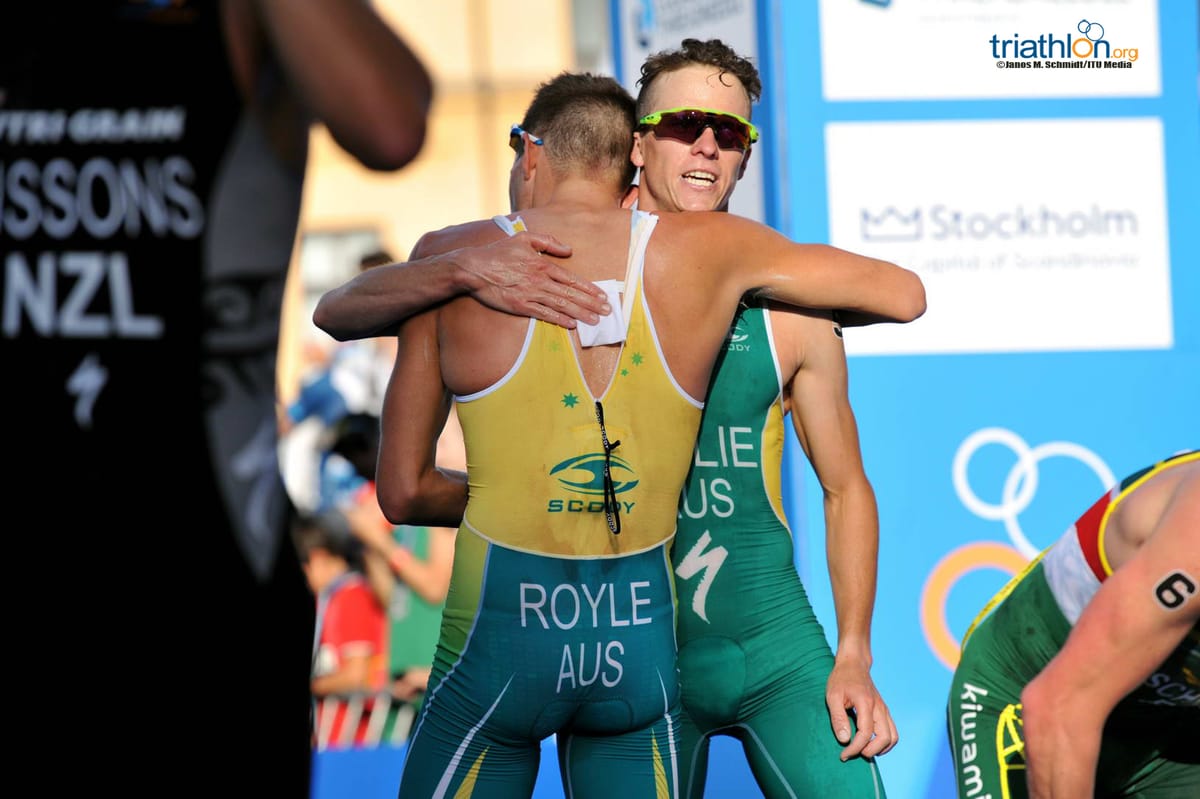
Australian Olympic triathlete, Aaron Royle, talks to Trizone about his preparation for his debut at the 2016 Olympics, finishing 9th in a battle against the world’s best athletes and and the challenges of peaking on the day.
Along with Ryan Baillie and Ryan Fisher, Aaron Royle went to Rio to represent Australia in the Men’s Triathlon. After finishing 6th at the 2015 Rio Test Event, ‘Bugs’ went into the Olympics with high expectations and the hopes of a nation on his shoulders. He talks to Trizone about what it takes to prepare for the Olympics, how his race panned out and how to cope when your best isn’t quite good enough on the day.
Trizone: Aaron, congratulations on your Olympic debut and achieving 9th place against the 54 best triathletes on the planet. How did you feel about the result?
AR: It was mixed emotions towards the back end of the race. I certainly didn’t have anything left in the tank when I crossed the line. I don’t know whether it’s a positive or a negative, but as athletes we always want more, we always believe that we’re capable of more. I guess that’s what keeps us coming back. So part of me believed that I was capable of better. But I knew on that day that was all I had, there was nothing else I could have given. At the very least I have to be proud of that effort.
Preparation for the big race
Trizone: We see the race on TV or the Web and obviously the media delivers the pre-Olympic drama and hype. But can you give us an insight into the planning and preparation that goes into getting to the Olympics from an athlete’s perspective?
AR: People try and tell you that it’s just another race so you shouldn’t treat it any differently. But I think you need to recognise it for what it is – it’s the Olympics and there are 55 of the best triathletes in the world all lining up and they’ve all been focused on this one day for a very long time. So, it is a bit different. The stakes are high, people are in career-best form, so in terms of preparation it’s the focus for the year, basically.
When we looked back at the test event we realised it was quite a unique course, so we were planning especially for that. We got the demands of the course from the test event and the power profiles for the bike. Because we don’t do a lot of swimming in the sea in ITU, I even wore an accelerometer in the swim in the test event to know what type of stroke rate and opening speed I needed for a sea swim.
Trizone: Can you break that down for us? What does that mean in practice?
AR: We’re not talking open ocean swimming, but in the sea there’s always a bit of chop. So that changes the stroke, that changes the way the swim is done. Essentially you aren’t able to sit in behind people and therefore, you need to be a strong swimmer in your own right. You can’t rely on getting ‘good feet’ so you need to have a good threshold. A lot of our training focused on developing the opening speed which you need at the start of the swim, but then also having a high threshold to settle in to that high intensity so you can stay at the front end of the race.
And for the bike, we knew there was a minute hill or just under a minute, that was quite steep. I don’t know if TV did it justice, but it got up to 18-20% I believe, so it was steep. Overall, we had a lot of data outlining exactly what the demands were for this race. There’s a bunch of people who contribute – my coach, Jamie Turner, obviously plays a big part in that and there’s another guy, Adam Radford who Jamie relies on to analyse data and break down the key components and aspects of the demands of the course. Then there are the sports scientists from the AIS. I like to know about this stuff, so I ask a lot of questions. But, there’s a great deal that goes into identifying the demands of the swim, bike and run components for this single race, before we even start our specific training for it.
Peaking on race day
Trizone: The reality of being an elite triathlete is that you’re always tired. What keeps you going? How do you manage your mental state?
AR: Obviously, the Olympic Games and training for that was all the motivation I needed to get out and push myself and punish my body every day, even though a lot of days it would have been much easier to stay in bed! The aim is to be in the best possible shape you can be for one day in four years and that’s the beauty and the curse of the Olympics. To get yourself in the best possible shape for one day is actually quite difficult to do.
Trizone: There are also so many external factors that you’re not in control of – you have to manage them as best you can. Plus, as 70.3 World Champion, Tim Reed, said, sometimes you just have a good day.
AR: Exactly! I think people say this a lot and it’s true – it’s about consistency over quantity. I read somewhere, and I don’t know the exact numbers or the stats, but generally those who perform to the best of their ability complete 95 out of 100 prescribed training days. They only miss 5 days because of illness, injury, fatigue, whatever. So a 95% completion rate gives you the best chance. They may not be great days, they might not be days when you broke records, but they’re days when you get the work done consistently. But I think that’s the biggest challenge – staying healthy and injury free and continually getting those days.
Trizone: To have your body at optimum performance it needs to be looked after and nurtured and if you’re not able to do that it makes things tough.
AR: It’s a balancing act, because triathletes are notorious for always wanting more and having the mindset that ‘rest is for the weak’. I’m 26 and I’ve been around this sport for a very long time, but I still find it hard, even though I know it’s a good decision, to take an easy day or to take a day off when I’m not well. I end up thinking, “Hell, I know my competitors are out training today and I’m here laying in bed…”
I’ve always said that triathlon attracts crazy people or it turns people crazy. I don’t know which one it is, but there’s definitely a crazy side to it!
Olympic debut
Trizone: Can you talk us through the race from the beginning?
AR: We arrived in Rio about a week beforehand and the lead-up was smooth. There were obviously extra things around the Olympics that we needed to do with the AOC and the media. A few days out from the race we moved from the Athlete Village to Ipanema where our race site was. I woke up on race morning feeling surprisingly calm for an Olympics. Obviously I was nervous and yes, a little bit more nervous than I would have been for a normal WTS race. I was excited but I wasn’t uncontrollably nervous. I knew it was the Olympics, but once I got down to the race venue everything was the same as for a WTS race. There was a comforting familiarity about it all. We had the same officials, the same coaches, the same transition, the same blue carpet… all that sort of stuff. And I remember lining up, before everyone gets called up individually to the start line, and thinking to myself this is just a normal WTS race. But then when my name was about to be called out, it hit me, “This is it. The Olympic Games. This is it. I’m ready for it. Let’s go!”
For the swim, normally in WTS your ITU ranking determines your spot on the pontoon, but in Rio it was picked at random. So the good swimmers were stretched out across the pontoon rather than being bunched up on one side, which meant that it was easier for them to get out well. It was a one lap swim which is not what we normally do and 500m to the first buoy, so the pack sorted itself out fairly quickly. Richard Varga got himself to the front and the usual suspects in the Brownlees, Henri Schoeman, myself, a few of the Russians and a few of the French were in a good spot come the first buoy, a third of the way into the swim. I could tell that I was in the front split- I was about 8th, sitting there quite comfortably after the opening surge. When you’ve had a good start and you get onto some good feet it’s normally quite relaxed and I remember thinking, ’Hopefully this is fast enough to get rid of some of the good runners like Mola and Murray’. I was a little concerned that they would be able to sit on the tempo that was set. Coming back in with about 400m to go is generally where a lot of the splits happen. I assume that Vargo, who was leading, picked up the pace because it got more strung out and that’s where it did hurt a little for me. But I was able to stay in control and in touch.
I got up onto the sand, looked around, saw the usual suspects and knew that I was in a good spot. Obviously, especially in ITU racing, you need to be desperate through the transition areas because generally that back end of the swim, the transition and the first part of the bike is where splits happen. A big focus of my race plan was to be prepared for that opening section of the bike and the transitions.
Fast and furious on the bike
AR: I got onto the bike. I knew that the Brownlees, and a couple of the Russians and the French were in front of me, but I didn’t know that people like Ryan Baillie and Mario Mola were not that far off at the start of the leg. You need to push that first part of the bike, so the Brownlees were absolutely hammering at the start. I knew I needed to do what I could to help because obviously that’s my strength and I wanted to give myself the best possible chance to perform to my potential.
It was hard – the hardest opening 15 minutes of bike I have ever experienced. Yes, we trained for that, but just because you’ve trained for it doesn’t mean it’s easy. Maybe in hindsight I pushed a bit too hard and never fully recovered come the run. Maybe not. Maybe had I not pushed as hard, it might have been Mario Mola and Rich Murray and a few good runners getting off the bike with us. It’s hard to say. But to put it in context, I heard that we rode about 2 minutes quicker than the test event last year. And a minute and a half of that was sliced off in the first two laps of the eight, so it shows how much faster those first two laps were compared to last year.
After the first two laps it settled down and the gap to the chase pack stayed at around a minute to 70 seconds for the next 6 laps. But you can’t relax. We rode along Copacabana Beach which was a straight section and then we turned and went up a side street through a steep hill and a few technical sections after that. I knew I needed to remain in good position in that area because that was the most challenging part and where it would string out a little bit.
I mentioned the steep hill earlier. For those people who like to know numbers, I had a 39:28 as my easiest gear. Even though we definitely never rode the hill easily, I dropped down to 39:28 a couple of times, but most of the time I stayed in 39:25. That’s quite a low gear for racing and I think we averaged 600 – 650w each time we pushed up the hill, which is quite high.
Overall, the ride was about staying in a good position to give myself the best possible chance to run well. The Brownlees were the main driving force, as they normally are, but as a group we rolled quite smoothly. It hurt though and it really hurt when I stepped off the bike. But I was thinking, “If I’m hurting then the other 12 or 13 guys in the lead group are hurting too.”
Bringing it home
Starting the run didn’t feel pleasant and I immediately went into 3rd, 4th and then 5th. Not for long, just for the first kilometre or so. And the Brownlees and the French guy, Vincent Luis, took off, they cleared out. I was running with Henri Schoeman and Marten Van Riel (Belgium) and I just couldn’t sustain the pace that they put on after a kilometre. Normally I run to their ability but I couldn’t sustain that and I thought to myself, well let’s settle into a pace that I know I can sustain a bit better and hope that they’ve gone out a bit too hard. Kudos to them, they held strong and they put a great performance together. Henri pushed up to third position and held on for Bronze so full credit to him. He had a fantastic race.
The run that I put together, well, I know I’m capable of something a bit better, but at the same time I know that was the best I had on the day. Pre-Olympics, we knew that a mid-31 (31 mins for 10km) off that type of bike leg was going to get you on the podium, so that’s what I trained for. Unfortunately, I found the bike very demanding and the heat in the middle of the day took its toll on me on the run. We were training to be able to run that sort of intensity off the bike, but I just wasn’t able to deliver on the day.
Trizone: To put it in context, you were just two seconds slower than the Gold Medallist, Alistair Brownlee, on the swim and only a second slower on the bike. It really did come down to the run.
Credit where credit is due
Trizone: You’ve got a reputation as a generous competitor, any callouts you’d like to give?
AR: The Brownlees have shown over the last four years that they’re beatable, but as athletes I have absolute respect for them in their ability and for what they’ve done for the sport. They have genuinely changed the way the sport is raced. There is no longer a chance to have a weakness in the swim, to not be strong enough on the bike or to not be able to run a sub-30 minute 10km off a hard bike. In my opinion, and I share that opinion with a lot of other past ITU athletes and current ITU athletes, they are the best that we’ve ever seen and probably will see in a long time. They’ve lifted the bar again in 2016. They’ve shown a new level of achievement. A lot of other athletes, myself included, are now going, “Right let’s keep working to get there.”
And a special mention to Henri Schoeman, the South African. I think he’s been knocking on the door for a WTS podium for a while and now he’s got third at the Olympic Games. It’s a great effort.
Trizone: How about your teammate, Ryan Baillie? To come in the top 10, he must have been pretty happy?
AR: He was happy. I guess he’s the same as me and all athletes – we all want a little bit more. His first part of the bike, he was very close to making the lead group. When that happens you wrestle with the ‘what ifs’. It’s the ‘what ifs’ that kill elite athletes. We all have them all the time. They’re probably not good things to have, but we all have them. So Ryan had some ‘what ifs’ after the race, but to come from the position he was at the start of the run to be top 10 at an Olympic Games was a fantastic effort.
And to be able to share that with Ryan was great. It’s been a 6 year journey with us, even a 7 year journey with Jamie Turner, together. Jamie had another young athlete, Tyler Mislawchuk, who was competing for Canada. Two years ago no one would have thought he would be going to the Olympics, but he came 15th and he’s only 21 years old. So we had three Wollongong Wizards in the top 15. I haven’t been able to sit down with Jamie and get his thoughts on the performances yet, but I think he’ll look back and be proud of our performances. I think as a coach he probably has the same thoughts as us – that there was maybe a little bit more there, but I think he’ll be proud of what we were able to achieve as a squad on the Men’s side.
Trizone: And what’s the plan now? What does the future hold?
AR: More WTS, but I’m looking at doing a couple of 70.3s next year when I’m fit enough and when I feel ready. Busselton and maybe Geelong? I’d like to test myself against a serious field – Reedy, Appo, Crowie, Berks, Sticksy. There are definitely a few legends there. We’ll see what happens!

